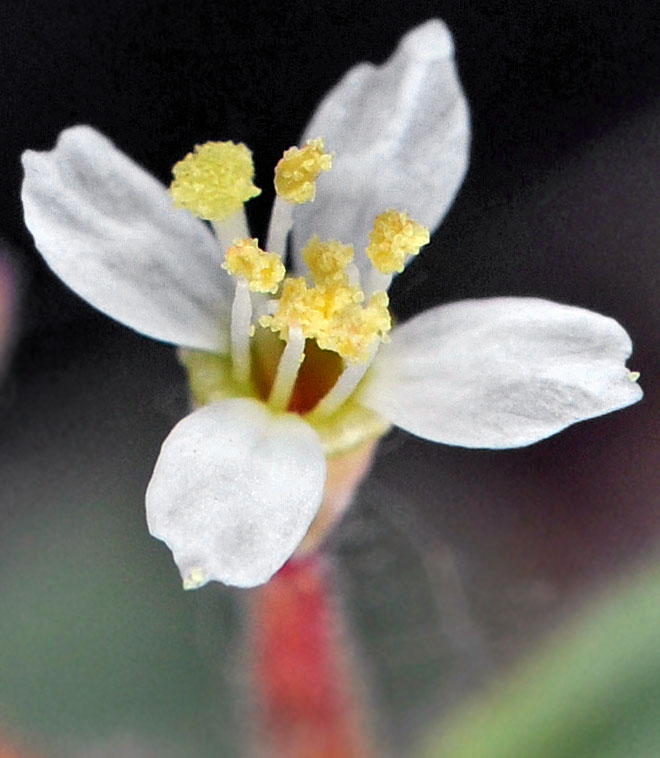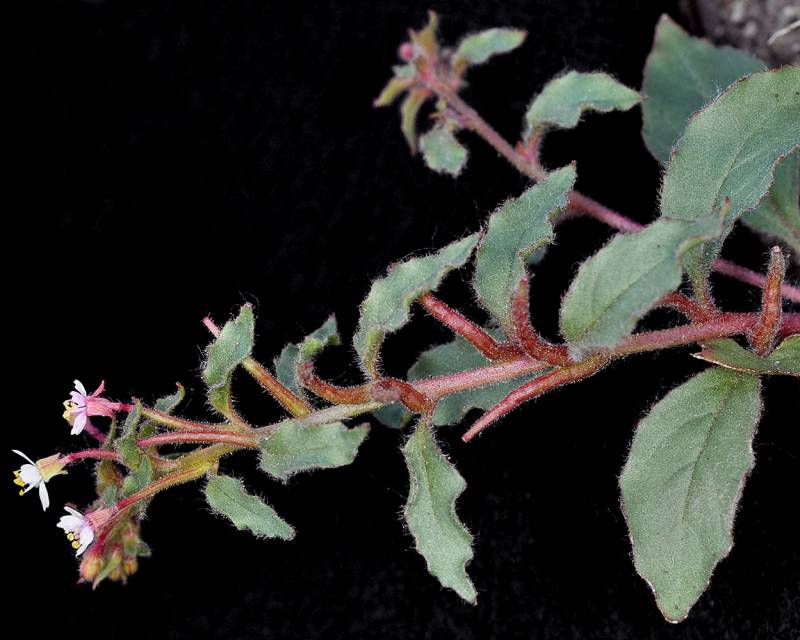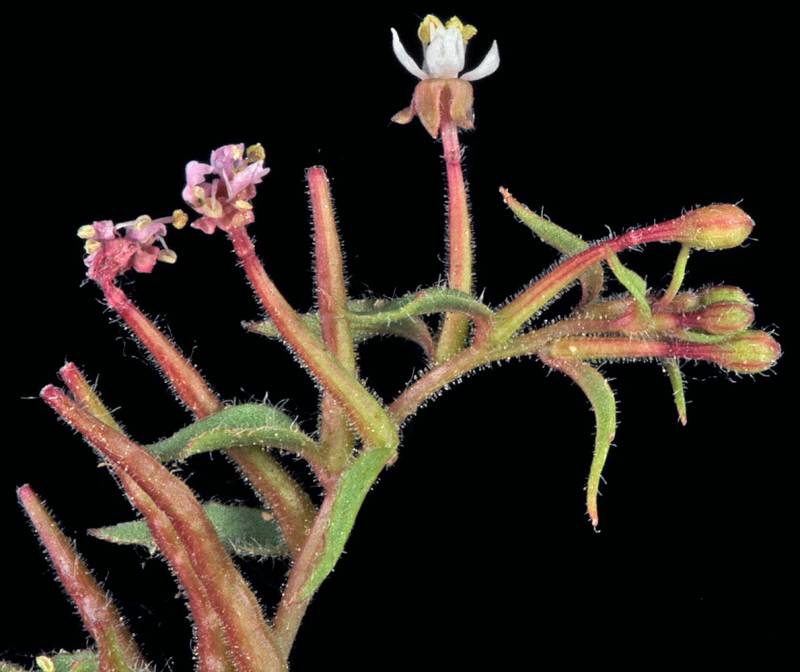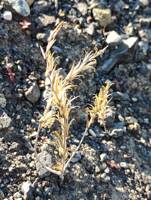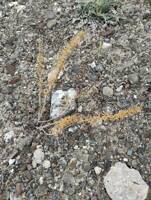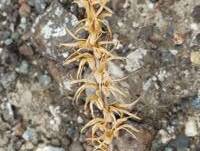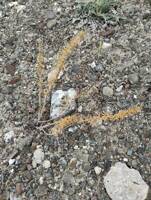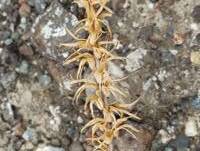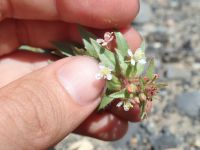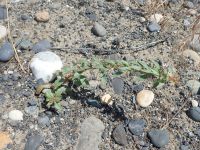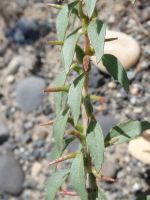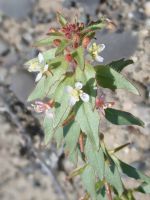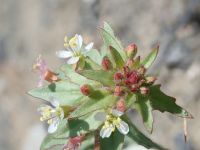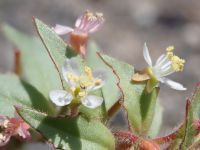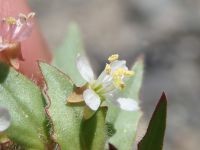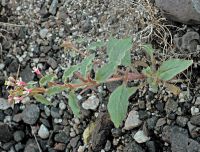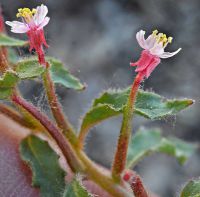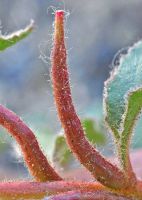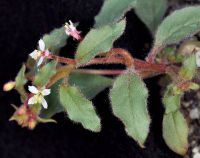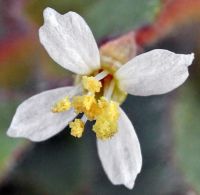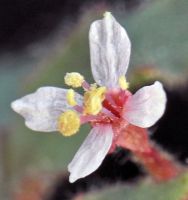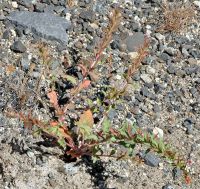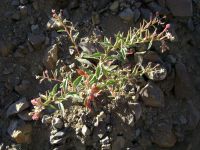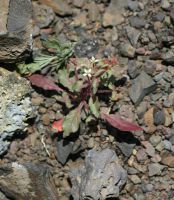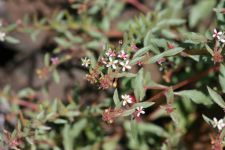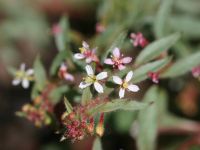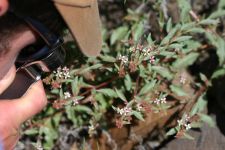Distribution: Occurring east of the Cascades in Washington; central Washington to southeastern Oregon, east to southwestern Idaho.
Habitat: Rocky or sandy slopes, talus, gravel washes, and disturbed areas in sagebrush desert.
Flowers: April-June
Origin: Native
Growth Duration: Annual
Conservation Status: Sensitive in Washington (WANHP)
Annual with fine glandular or appressed hairs, the stem simple or branched below and usually branched above, 1-4 dm. tall.
Leaves alternate, the blades lance-ovate to oblanceolate, entire to dentate, 2-6 cm. long, the lowers ones with petioles nearly as long, the upper ones reduced to linear-lanceolate sessile bracts.
Flowers sessile in elongate, crowded, many-flowered spikes; calyx tube 2-8 mm. long, the 4 lobes distinct, reflexed, 1.5-7 mm. long; petals 4, white, aging to pinkish, 1.5-2.5 mm. long ; stamens 8, equal to the petals, the style slightly longer, the stigma globose; ovary inferior, 4-celled.
Capsule narrowly spindle-shaped, 6-12 mm. long, curved in the upper half but not greatly contorted.
Publication: Syst. Bot. Monogr. 83: 210. 2007.
Oenothera boothii Douglas var. pygmaea (Douglas ex Lehm.) Torr. & A. Gray
Oenothera pygmaea Douglas ex Lehm. [HC]
PNW Herbaria: Specimen records of Eremothera pygmaea in the Consortium of Pacific Northwest Herbaria database
WA Flora Checklist: Eremothera pygmaea checklist entry
OregonFlora: Eremothera pygmaea information
E-Flora BC: Eremothera pygmaea atlas page
CalPhotos: Eremothera pygmaea photos

